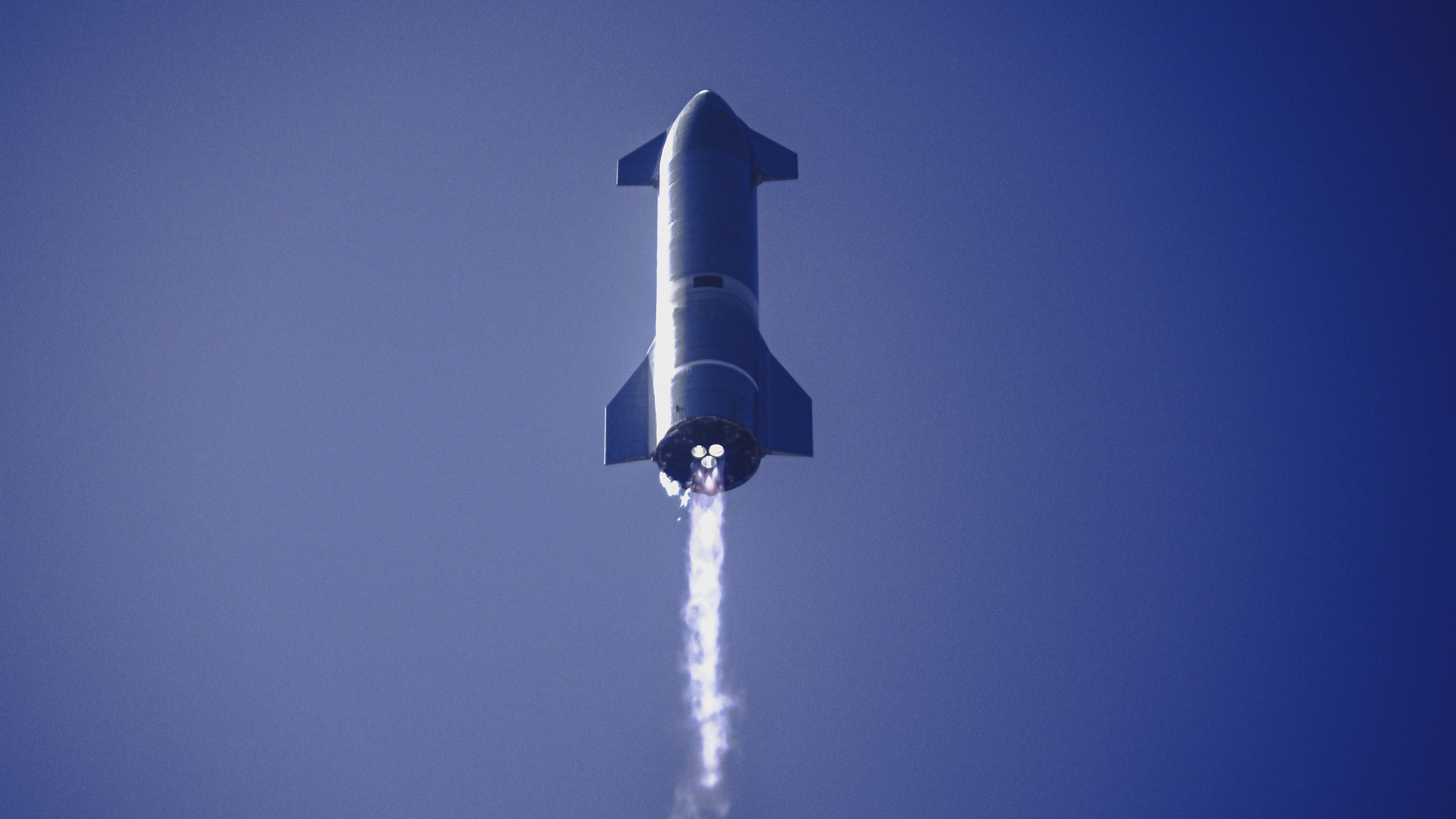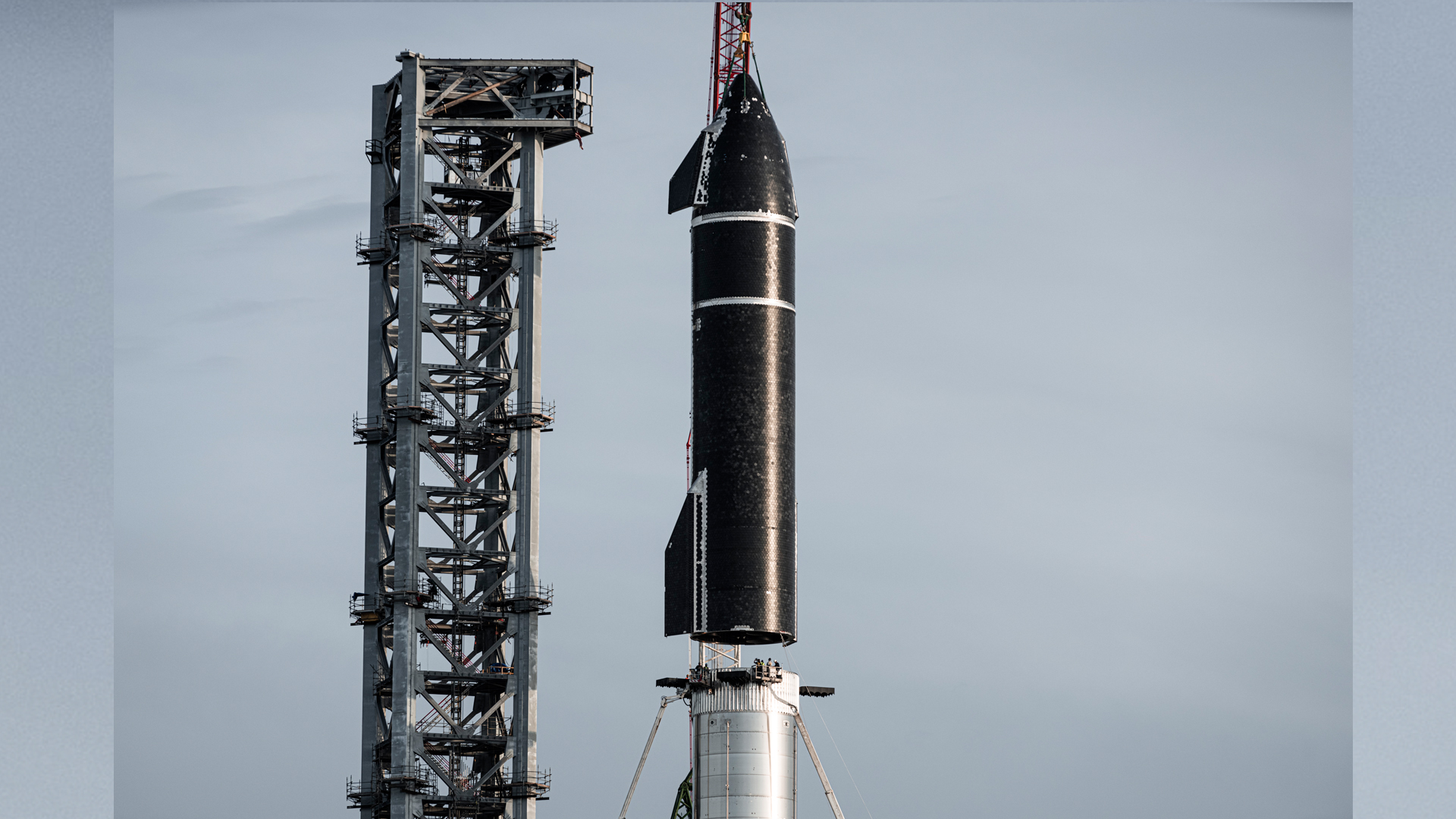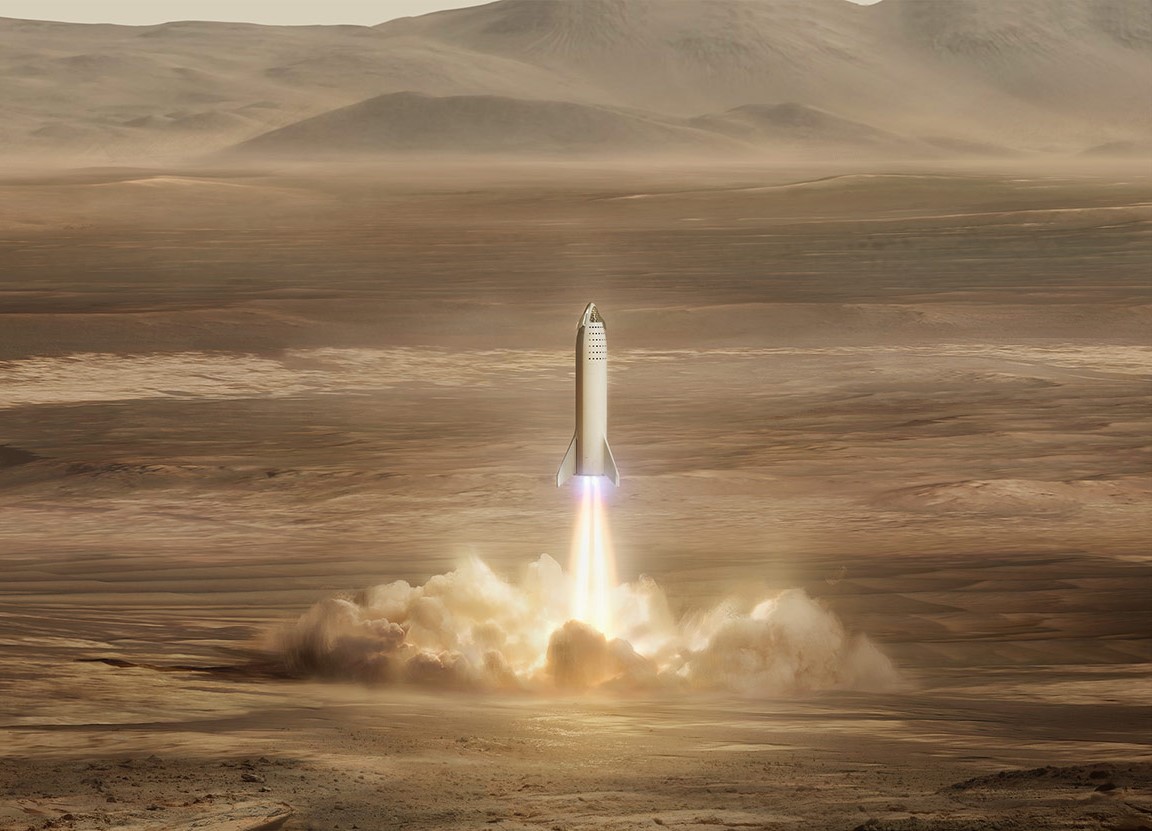
How Will SpaceX’s Starship Land On Mars?
With SpaceX’s Starship development continuing at rapid speeds, the thought of Mars can come to mind. While Starship and SpaceX still have a long way to go before they attempt a landing on the red planet, SpaceX has given some information on how exactly a Starship might safely land.
To land on Mars, Starship will lose over 99% of energy aerodynamically, the rocket will then perform supersonic retro propulsion for the landing burn. Due to multiple factors including initial speed when arriving at the planet along with the thinner atmosphere on Mars, Starship will have to perform a different and more aggressive landing maneuver compared to Earth.
Landing on Mars is extremely difficult. SpaceX will first have to master landing Starship on Earth before they try it over 240 million miles away. However, Starship has made immense progress in a short amount of time. With the first orbital test flight very soon we will see how Starship does on its first try reentering the Earth’s atmosphere, along with the effect it has on future Mars landing plans.
Why Does SpaceX Want To Land On Mars?

Since SpaceX was founded in 2002 by Elon Musk one of the main goals has been to get to Mars. Musk not only wants to get to the planet but set up a large colony for humans and exploration. The reason for this has to do with inspiration, exploration, and overall future human goals. Specifically, Musk has said, “In order for us to have a future that’s exciting and inspiring, it has to be one where we’re a space-bearing civilization.” This along with multiple other reasons is why SpaceX and Elon Musk have the goal of getting to Mars.
How Starship Will Land On Mars
Difference In Atmosphere – One of the first major differences about landing on Mars is the atmosphere. Mars’s atmosphere is primarily carbon dioxide, more importantly though the atmospheric volume is less than 1% of Earth’s. With such a thin atmosphere it means just entering the atmosphere will not slow down any object nearly as much as on Earth. An example of this can be seen in a lot of missions to Mars including NASA’s more recent Perseverance rover. After entering the thin atmosphere and getting closer to the surface, one of the final steps is using thrusters to slow down for landing. Parachutes are deployed to help slow down the rover but because of the atmosphere, they are not nearly enough for a slow and safe landing. This is the reason Starship will not be able to belly flop all the way down and then light its engines last second like on Earth.
Speed At Re-Entry – Similar to re-entering Earth’s atmosphere, Starship will be going very fast when arriving at Mars. In a Mars landing simulation video released by SpaceX in late 2019, it mentioned the hyperbolic entry speed at up to 7.5km/s. This speed is an immense amount of energy that SpaceX and Starship need to get rid of prior to landing. While the atmosphere is very thin, Starship’s big frame and Mars’s atmosphere will still help get rid of the majority of the speed. SpaceX’s simulation then mentions that over 99% of the energy is removed aerodynamically.
This is where Starship’s large body and heat shield come in handy. When entering the atmosphere Starship will be exposed to thousands of degrees of heat. Thanks to Starship stainless steel construction and large heat shield array it should be capable of withstanding the heat. Once close to the surface, Starship will have slowed down over 99% just from entering the atmosphere. Starship will now have to complete a landing burn.
Aggressive Landing Burn – The final and arguably most complicated step of the Mars landing process is the landing burn. We have seen Starship fall back to Earth and re-light its engines to land but this will not be the case on Mars. As I mentioned before there are multiple reasons why Starship will be going much faster than on Earth. This makes it impossible for Starship to just flip at the end and land like we have seen so many times.
SpaceX instead has different plans for a much more aggressive landing burn. SpaceX’s simulation showed at around 2.5km in altitude Starship would slightly reorient itself and light its engines. Specifically, Starship goes from a belly-first approach to engines angled towards the ground. The rocket then lights its engines for a total of around 40 seconds before finally touching down slowly on the Martian surface. From when Starship first lights its engines to landing, the rocket will have gone from Mach 2.4 to completely still. It’s important to point out that this simulation is an older one. The Starship model in the video is completely different and a lot of things have changed. However, the simulation still gives a good idea about some of the numbers during re-entry and what SpaceX is thinking to safely land on Mars.
Heat Shielding

Starship’s heat shielding is vital to surviving a Mars re-entry. With temperatures reaching thousands of degrees, the rocket will need to be capable of handling very high heat. Currently, Starship has two important features that will help with this process. One is its heat shield and the other is Starship’s stainless steel construction. A unique part about Starship is using stainless steel as the main construction material. While steel is a lot heavier than other common rocket materials it is very cheap and has high heat resistance.
The high heat resistance is not enough by itself to keep the rocket fully intact on re-entry but it helps a lot when combined with a heat shield. The heat shield is also necessary for landing on Mars. SpaceX is working on installing and testing a large grid of heat shields covering over 50% of Starship’s body with hexagonal tiles. These tiles are mostly uniform and meant to be affordable, quick and easy to replace, and most importantly heat resistant. The combination of these tiles and Starship’s stainless steel construction will help the rocket survive the intense heat and power when entering the atmosphere.
Progress On Earth
Before Starship gets anywhere near Mars it needs to be perfect through tests on Earth. SpaceX has continued to rapidly develop Starship through a constant construction of prototypes and tests. So far SpaceX has performed a large array of tests including static fires, cryo tests, 150m hops, and 10km flights. SpaceX has been successful at least once in all of the tests listed. This is the reason their next step is an orbital test flight. The orbital test flight will be extremely challenging and provide a lot of important and relevant information for a future Mars landing. A lot of the challenges such as the heat and the re-entry process are partially similar on Earth. The results of the test will impact SpaceX’s future Starship design and the plan for landing on Mars.
Conclusion
SpaceX still has a long way to go but they are making progress at speeds never seen before in the space industry. Starship’s unique and innovative design is crucial if it wants to survive the dangerous mission to the surface of Mars. Starship will first have to lose the majority of its speed and energy in the atmospheric entry process. Starship then will perform supersonic retro propulsion for the landing burn. While this process could change in the future, it provides a good idea of what SpaceX and Starship are planning for landing on Mars. As time goes on and SpaceX makes more progress on Starship we will have to see what ends up happening.
